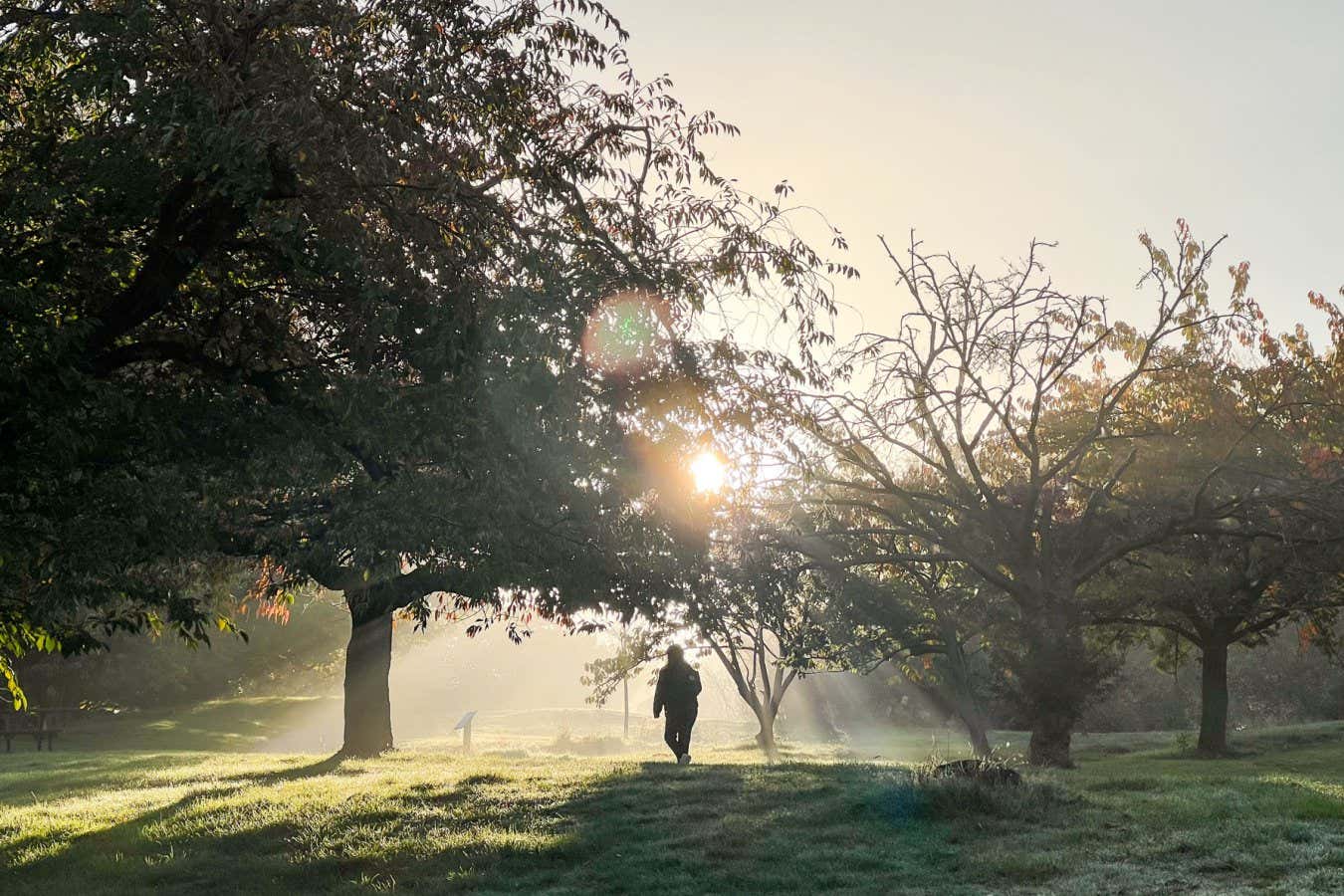
Time spent in green spaces boots working memory and attention
Luke Hayes/Millennium Images, UK
Nature and the Mind
Marc Berman (Vermilion, UK; S&S/Simon Element, US)
Marc Berman is out to start a revolution. I am already a convert to his cause – and you may be too, having read in New Scientist about the extraordinary benefits of a nature walk, the healing power of plants and the magic of urban green spaces.
If so, perhaps you will think there is nothing to be gained from a book about Berman’s research. You would be wrong. Nature and the Mind is for everyone from the adept to the uninitiated – it isn’t simply written to educate and entertain, it is a call to action.
This is the story of how an anxious boy, warned off studying medicine by his mother, a nurse, and law by his father, a lawyer, enrolled as an undergraduate in engineering and then went on to establish the revolutionary field of environmental neuroscience.
At its heart is a chance encounter with psychologists Steve and Rachel Kaplan at the University of Michigan and their big idea – attention restoration theory, or ART. This posits that interactions with nature improve our attention in ways that allow us to function better, and the Kaplans already had plenty of evidence to back this up by the time Berman met them as a graduate student.
His audacious plan, however, was to measure these effects: to use brain imaging, behavioural experimentation, computational neuroscience and statistical models to quantify the person, the environment and their interactions.
In his book, Berman recounts the reaction when he proposed his first experiment, which would entail giving people tasks to assess their attention level before and after taking a stroll in nature. “That’s crazy. That’s not gonna work,” said his supervisor, cognitive neuroscientist John Jonides, also at the University of Michigan.
The author advocates for a revolution to ‘naturize’ our homes, schools, offices and cities
Nevertheless, Berman ploughed on. And what he discovered was astonishing. A mere 50-minute walk in the park boosted people’s working memory and attention by 20 per cent, and the effect was the same whatever the weather, whether they enjoyed the experience or not – they didn’t even need to walk, simply being in nature was enough.
That is an impressive improvement, but why would we want to restore our attention? Well, as Berman points out, attention is the common resource for most cognitive and emotional functions, yet we live in an attention-grabbing world that depletes it. So, by replenishing this precious commodity, nature is like a superpower, able to make you smarter, happier, less stressed, more productive and caring.
Some of Berman’s findings are mind-blowing. For instance, clinically depressed people got five times the benefit from a walk in the park than the volunteers in his original study. And having just 10 extra trees on an average-sized block in Toronto increased people’s feelings of health by 1 per cent, the same effect as if everyone were seven years younger or they were given $10,000 each.
Other studies are wonderfully creative. In one of them, his team used the JPEG standard for digital image compression to explore how the human brain processes information in natural landscapes compared with urban ones. This led to the discovery that when urban and natural images appeared to have similar levels of complexity, the latter were less taxing on the brain. The team has also developed an app that gives “restoration scores” for routes in your neighbourhood.
Berman’s research answers big questions. How does nature restore attention? What aspects of a scene are restorative? How can architecture tap into these effects? It also addresses little questions, including the hidden appeal of fonts like Garamond (it is down to the curves in serif typefaces) and why Jackson Pollock’s paintings are so captivating (it is the fractals).
But, above all, he wants his work to do good – and here is that call to action. He advocates for a “nature revolution” using the lessons from environmental neuroscience to “naturize” homes, schools, offices and cities.
“We have to… fundamentally change how we design all built spaces,” he writes. “The nature revolution requires that people take this work seriously on a massive scale.”
Source link : https://www.newscientist.com/article/mg26735562-100-mind-blowing-effects-of-nature-on-our-brains-revealed-in-new-book/?utm_campaign=RSS%7CNSNS&utm_source=NSNS&utm_medium=RSS&utm_content=home
Author :
Publish date : 2025-08-13 18:00:00
Copyright for syndicated content belongs to the linked Source.